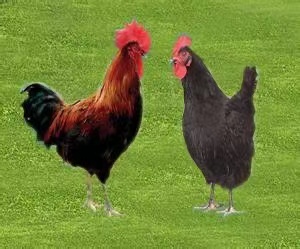

News briefing: Add baking soda in 1 kg/100 kg of water in an appropriate amount in the water. Baking soda cannot be added for a long time, which will easily cause group diarrhea; you can also add 1‰ of citric acid in the feed to allow chickens to eat freely.
When the outside temperature is higher than 32℃, it will cause the blood temperature and blood flow in the chicken to increase, which will further increase the body temperature of the chicken again, causing dizziness, collapse, convulsive death, sudden death, etc.
一 Clinical symptoms
Suddenly died in the hot afternoon, and there were more obese chickens, body temperature increased, feed intake decreased, water consumption increased sharply, lying still, mouth breathing, two wings spread, laying hens mostly occurred at midnight, in cloaca There are unproduced eggs, thin and irregular feces, etc.
二 Pathological changes
Body burning and hot hands, cyanosis of the skin, a lot of water in the crop; poor blood coagulation, incomplete corpse; meningeal congestion, hemorrhage, congestion; liver swelling, fragility, gallbladder filling; pericardial effusion, myocardial hemorrhage; pulmonary congestion, edema ; Intestinal wall thinning, intestinal mucosa shedding; ovarian congestion, fallopian tube edema, etc.
三 Preventive measures
1 Use materials with good thermal insulation properties to construct the poultry house. The roof and walls are painted white, and trees are planted around the poultry house to reduce solar radiation. In the case of good ventilation, a wet curtain is used and longitudinal ventilation is strengthened, which can reduce the temperature in the house by 3 to 6°C. Spraying cold water on the top of the house and the chicken body will help evaporate and dissipate heat. In hot times, cold water can be sprayed directly into the poultry house or poultry body, which can effectively reduce the heat stress reaction of the chicken.
2 Plant trees or shade nets around the poultry house to prevent long-term direct exposure to the hot sun; adopt longitudinal ventilation, increase ventilation, and reduce the temperature and humidity in the house.
3 Reduce the stocking density, increase the drinking utensils and the frequency of drinking water. Drinking water during heat stress is a very critical issue, but it is often overlooked. During heat stress, 80% of the heat emitted by the chicken is lost through evaporation. Drinking water increased by 20%, respiratory evaporation and heat dissipation increased by 30%, drinking water increased, and fecal water content increased, and a large amount of body heat was lost through this "diarrhea". Therefore, it is necessary to ensure sufficient clean and cold water to increase breathing and excretion of feces and urine to take away heat energy. Lights can be turned on at midnight from 12:00 to 02:00, and water is provided for drinking, driving exercise can reduce death.
When the water temperature is too high, the chicken will refuse to drink. Only when drinking cold water at a low temperature can it absorb a lot of body heat. If the drinking water temperature is too high, it will lose the function of regulating body temperature. The cold water in the crop can cool the arterial blood supplying the brain and the venous blood from the comb and wattles, reducing deaths caused by heat exhaustion. Therefore, the hot summer drinking water must be cool, low temperature and cold water.
4 Reasonable use of anti-heat stress drugs: According to a series of physiological changes that occur in the body, the application of drugs that regulate body fluid balance and cool and damp Chinese medicine can alleviate the loss caused by heat stress to a certain extent.
5 Add baking soda in 1 kg/100 kg of water in an appropriate amount in the water. Baking soda cannot be added for a long time, which will easily cause group diarrhea; you can also add 1‰ of citric acid in the feed to allow chickens to eat freely.